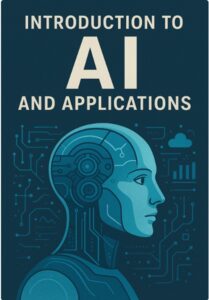In recent years, machine learning (ML) has revolutionized various fields, from healthcare to finance, by offering powerful tools to model and predict complex systems. However, traditional ML models often act as black boxes, requiring vast amounts of data and sometimes ignoring fundamental physical laws that govern the phenomena they aim to predict. This is where Physics-Informed Machine Learning (PIML) comes into play.
PIML represents a synergistic blend of physics-based modeling and machine learning techniques, allowing us to build models that are not only data-driven but also informed by the underlying physical principles of the system. This approach offers a more efficient, interpretable, and generalizable solution to complex problems, particularly in areas where data is scarce or expensive to obtain.
The Need for Physics-Informed Machine Learning
Traditional ML models excel in scenarios where large datasets are available, and the relationships between inputs and outputs can be learned from data alone. However, in many scientific and engineering applications, data may be sparse, noisy, or expensive to acquire. Additionally, these applications often involve complex systems governed by well-established physical laws, such as the conservation of energy, momentum, or mass.
Ignoring these laws can lead to models that, while accurate on training data, fail to generalize to new scenarios or respect the constraints imposed by the physical system. PIML addresses these limitations by incorporating physical knowledge directly into the learning process, resulting in models that are more reliable and require less data.
Key Concepts in Physics-Informed Machine Learning
1. Physics-Based Priors
In PIML, physical laws, such as partial differential equations (PDEs), are used as priors in the learning process. This ensures that the model adheres to known physical constraints, even in regions of the input space where data is sparse. For example, in fluid dynamics, the Navier-Stokes equations can be integrated into the model to enforce consistency with the physics of fluid flow.
2. Hybrid Modeling
PIML often involves hybrid models that combine data-driven ML components with physics-based models. A common approach is to use ML to model the parts of the system where the physics are complex or unknown, while using traditional physics-based models where the physics are well-understood. This can reduce the computational burden and improve the interpretability of the model.
3. Regularization with Physical Laws
In many PIML frameworks, physical laws are used as regularizers in the loss function during training. For instance, if a model is being trained to predict the behavior of a dynamic system, the loss function can include terms that penalize violations of the system’s governing equations. This helps the model to not only fit the data but also respect the physical constraints.
4. Physics-Informed Neural Networks (PINNs)
A popular approach within PIML is the use of Physics-Informed Neural Networks (PINNs). PINNs are neural networks trained to solve PDEs by incorporating the residuals of these equations directly into the loss function. This allows the network to learn solutions that satisfy both the data and the governing physical laws, leading to models that generalize better to unseen scenarios.
Applications of Physics-Informed Machine Learning
PIML is particularly useful in fields where physical laws play a critical role and data is limited or expensive. Some key applications include:
1. Computational Fluid Dynamics (CFD)
PIML has been used to accelerate CFD simulations by learning models that respect the underlying fluid dynamics. This allows for faster and more accurate predictions of fluid behavior, which is crucial in industries like aerospace, automotive, and energy.
2. Structural Health Monitoring
In structural engineering, PIML can be used to predict the health and stability of structures by integrating sensor data with physical models of material behavior. This can lead to more accurate predictions of failure and better-informed maintenance decisions.
3. Climate Modeling
Climate models are governed by complex physical processes, and data is often sparse or uncertain. PIML can improve the accuracy and robustness of climate predictions by incorporating physical laws like thermodynamics and fluid dynamics into the learning process.
4. Biomedical Engineering
In biomedical applications, PIML can be used to model biological systems that are governed by physical laws, such as blood flow or tissue mechanics. This can lead to more accurate models for medical diagnostics and treatment planning.
Challenges and Future Directions
While PIML offers significant advantages, it also comes with challenges. Integrating physical laws into ML models can increase the complexity of the training process and may require specialized knowledge in both ML and the relevant physics. Additionally, there is ongoing research into the best ways to balance the influence of data and physics in the learning process.
Looking forward, PIML is expected to play an increasingly important role in scientific discovery and engineering design. As more complex and high-fidelity models are developed, PIML has the potential to unlock new insights into systems where traditional ML or physics-based approaches alone fall short.
Conclusion
Physics-Informed Machine Learning represents a powerful paradigm shift, combining the strengths of data-driven modeling with the rigor of physical laws. By embedding physical knowledge into ML models, PIML offers more interpretable, reliable, and generalizable solutions to some of the most challenging problems in science and engineering. As this field continues to evolve, it promises to open new frontiers in our understanding and ability to predict complex systems.
References:
Physics-informed Machine Learning | PNNL
Physics Informed Machine Learning – YouTube
Physics-informed machine learning | Nature Reviews Physics
Physics-informed neural networks – Wikipedia
Authors | Physics Informed Deep Learning (maziarraissi.github.io)





